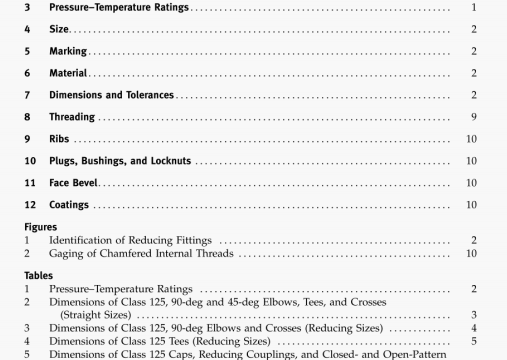ASME B5.60-2002 pdf download
ASME B5.60-2002 pdf download.WORKHOLDING CHUCKS: JAN TYPE CHUCKS.
centrifugal force: force generated by rotation that tends to move all parts away radially from the axis of rotation of the chuck.
chuck adapter: interface between the machine and the chuck. It can be a separate component or integral to chuck body.
chuck both’: that part of the chuck that contains the actuator and master jaws.
clamping cylinder: device that actuates the chuck through a draw bar or draw tube with the aid of pneumatic or hydraulic energy.
ciampmg force: algebraic sum of the individual radial forces applied by the top jaws on the workpiece.
clamping torque: product of the clamping force, clamping radius, and the coefficient of friction between the top jaw(s) and the workpiccc.
countercentrifugal chuck: a chuck in which there is a system that permits compensation for the loss of clamping force due to centrifugal force.
draw bar: a bar or tube that connects the clamping cylinder to the chuck’s actuator to transmit the input force to the chuck.
dvnam ic clamping force: actual clamping force when the chuck is rotating.
hysteresis: change in static clamping force after the chuck has been rotated at working rotational speed with a constant input force.
indicating band: a diameter on the chuck body designated for measuring runout of a chuck.
input force: force acting on the chuck’s actuator, applied from an external energy source.
input torque: torque acting on the chuck’s actuator, applied from an external energy source.
master jaw: radial moving part within the chuck body to which the top jaw is mounted.
maxi,ni.tm rotational speed: maximum rotational speed in RPM specified by the manufacturer for a
chuck with standard jaws in compliance with the man Ufacturer’s instructions.
iliaxIntuin static clam pin.g force: maximum clamping force obtained when the maximum permissible input force (or maximum input torque) is applied to a particular chuck.
moment of inertia: moment of inertia with respect to a given axis is the limit of the sum of the products of the mass of each of the elemental particles in which the body may be conceived to be divided and the square of their distance from the given axis.
rotational balance.




